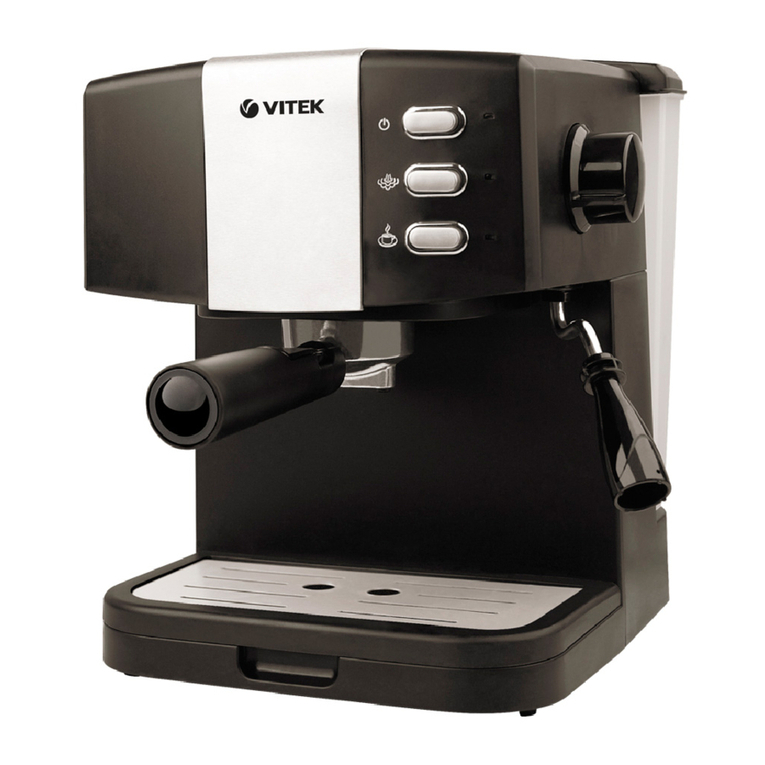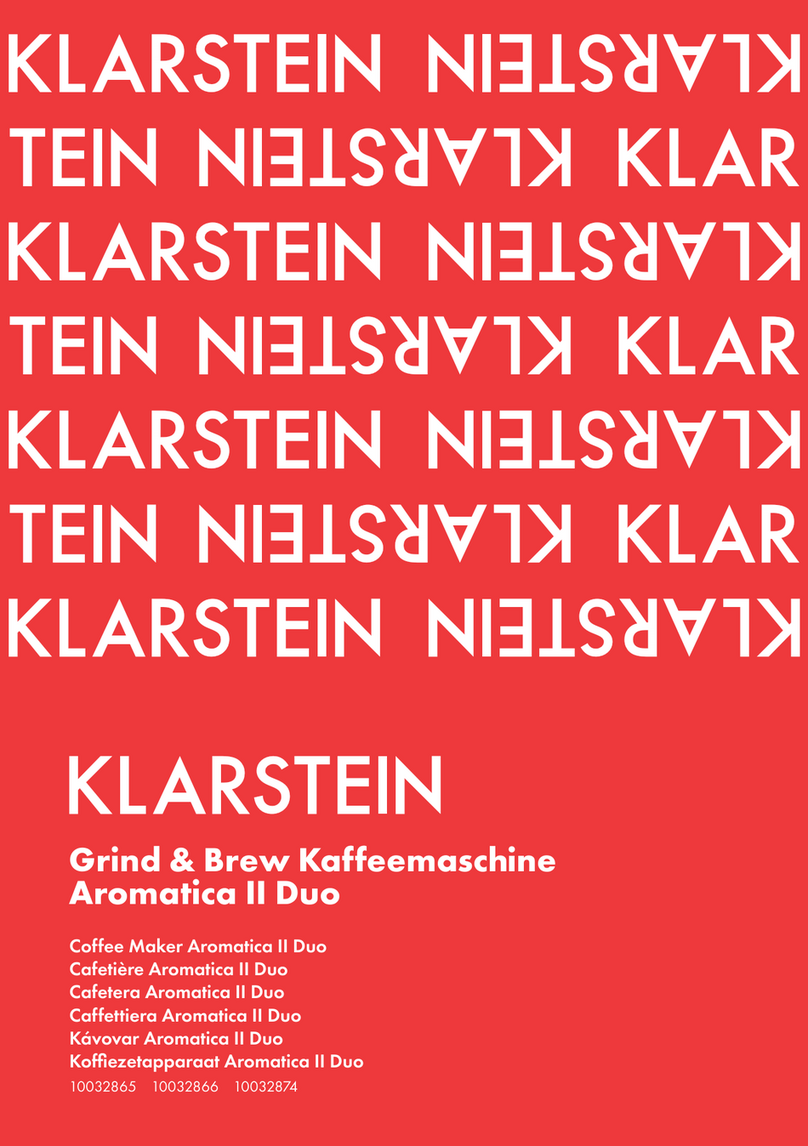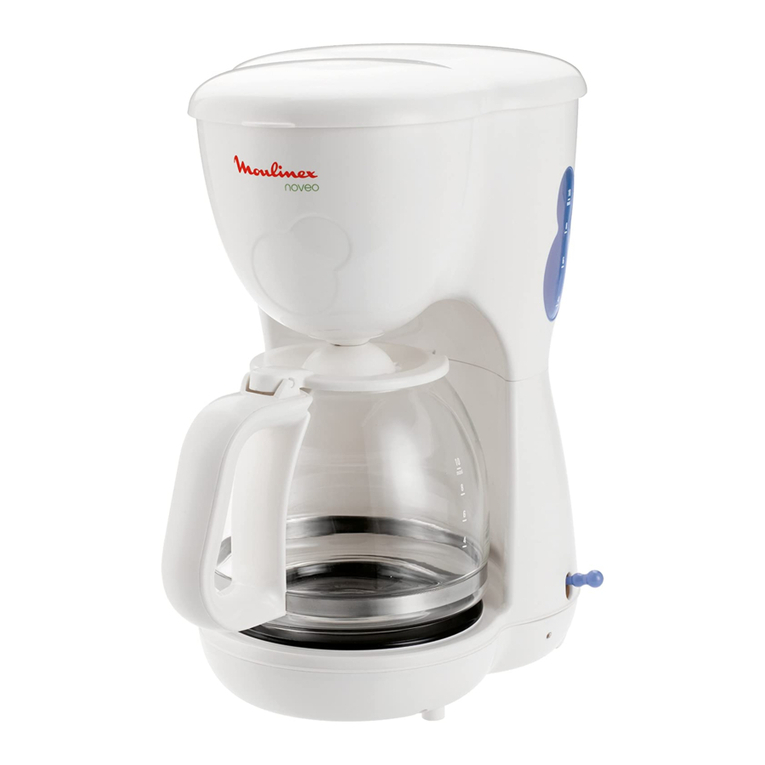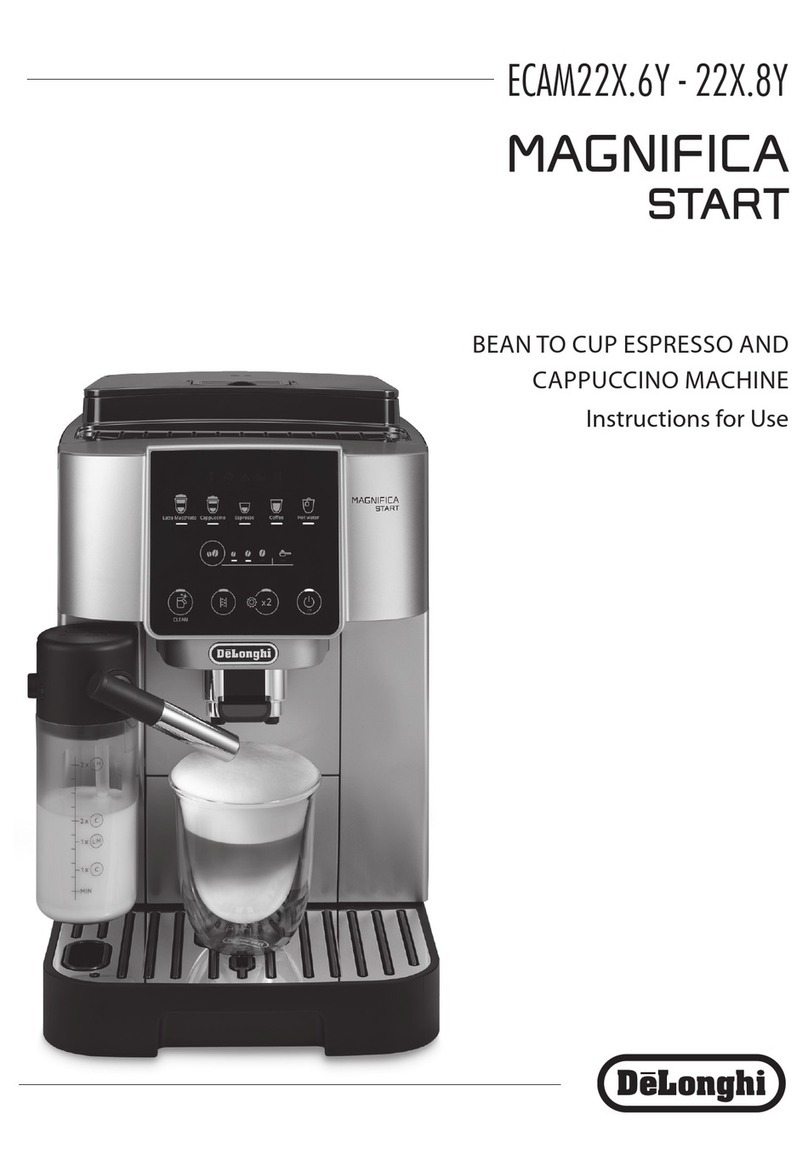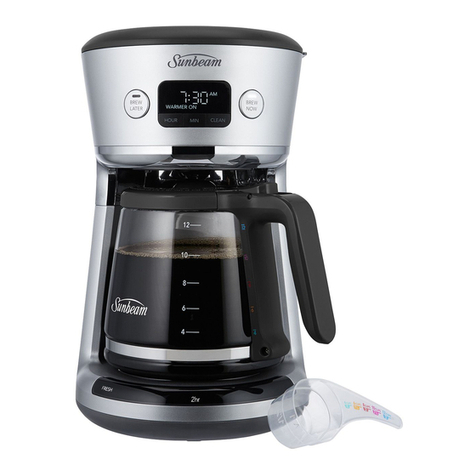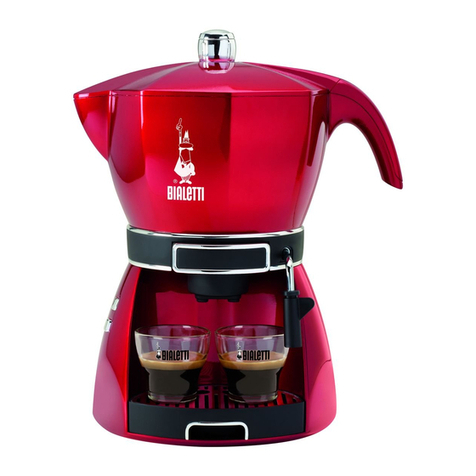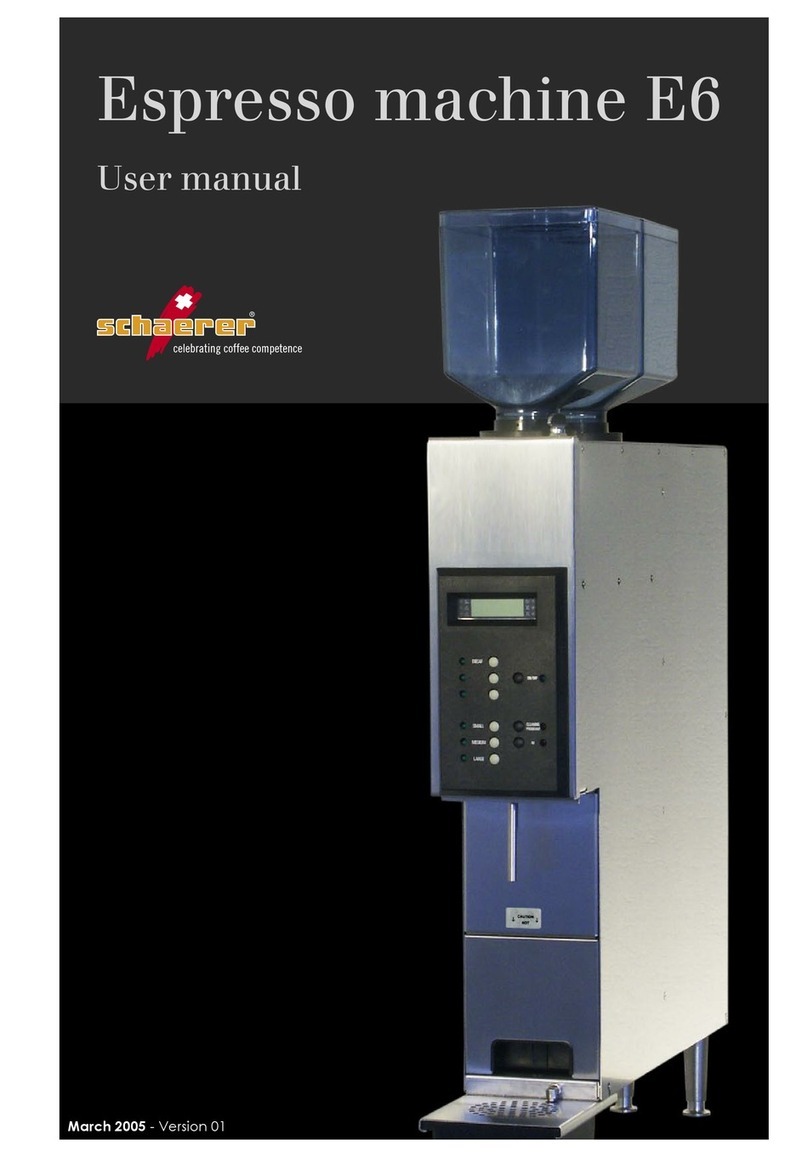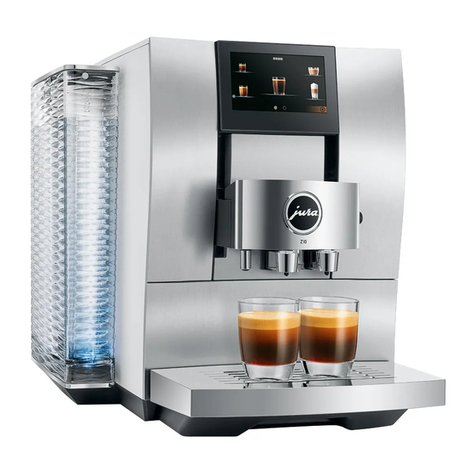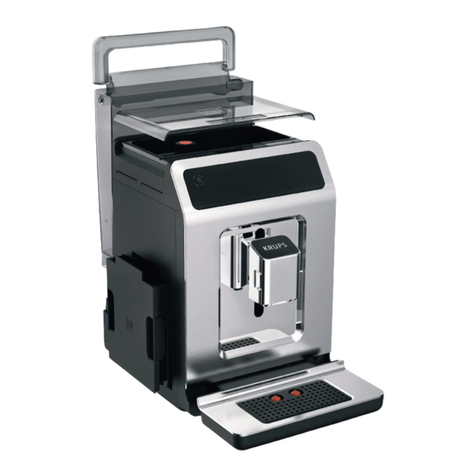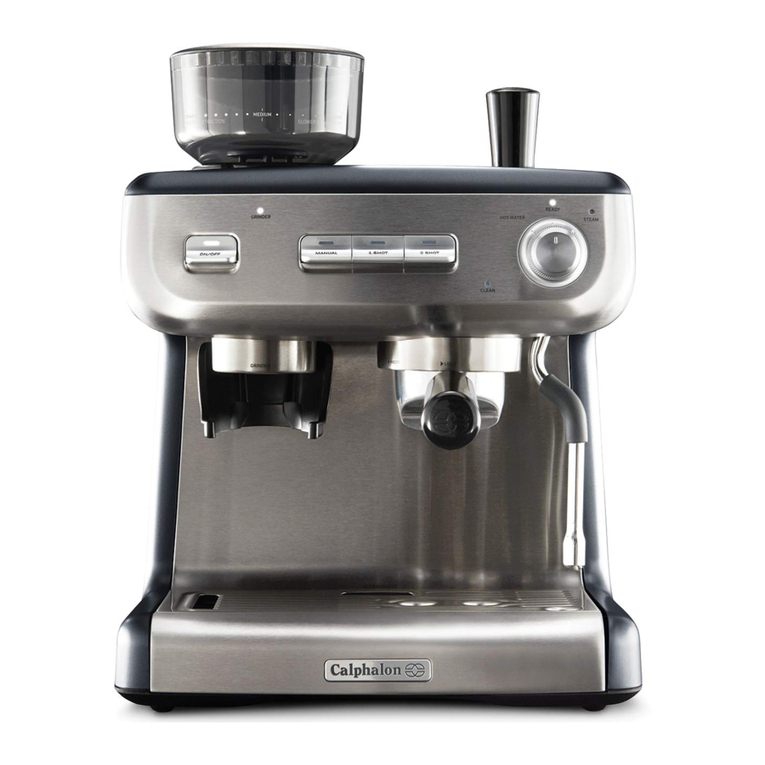Craighton Berman Studio Coffeemaker N 3 User manual

Coeemaker
Nº3
USER MANUAL

1
The beauty of hand brewing coee
is all in the experience—the smells,
the sounds, the movements—the
ritual is essential.
At its core, Nº3 is an understated
glass pitcher—hand-blown with
a double walled design. After
brewing a pot of pour-over, French
press, or cold brew coee, you
simply cork the pitcher, and bring
it to the table to enjoy with others.
Coeemaker Nº3 is designed to
celebrate morning rituals, but
we also intended it to be exible
enough to use every day—and of
course produce a damn ne cup
of coee.
Enjoy—and take it slow.
Coeemaker Nº3

2 3
LID
Cork lid for pitcher (when
serving) and dripper (while
brewing)
DRIPPER
Porcelain pour-over dripper
PRESS
French press plunger with
cork lid and wooden knob
PITCHER
Hand-formed double walled
borosilicate glass
FILTERS
Melitta 8-12 cup basket
lters, typically used for
auto-drip machines (widely
available at most US grocery
stores)
KITCHEN SCALE
Accurate coee bean
measurement helps you get
the right ratio of coee to
water (see page 7)
BURR GRINDER
One of the most important
tools for good coee is a
good grinder. Burr grinders
create a more consistent
grind, which means a more
even extraction of coee
EXTRA MUG
A temporary place to hold
the ceramic dripper when it
is removed after brewing
Components Recommended

4 5
1—PREPARE
• Place a lter in the dripper
and place the dripper
carefully in the pitcher
• Pour boiling water through
the lter to rinse. Dump out
water before brewing
2—PRE-WET
• Grind the coee dose
(see page 7) at a medium
coarseness and put it in the
lter
• Pour a small amount of hot
water (just o the boil)
on top of the coee—just
enough to evenly wet the
grounds
• Wait at least 30 seconds for
the pre-wet or ‘bloom’. This
gives the coee time to be
evenly saturated, so it can
extract evenly
3—POUR
• Slowly pour water over the
grinds in a circular motion to
create a “slurry” of coee
• Once the slurry level is 1/2
inch from the top of lter,
pause your pour to allow
coee to draw down into the
carafe. Avoid having coee
on the side of the lter, out
of contact with water
• Slowly add remaining water
until you reach the desired
volume of brewed coee (see
page 7)
• Ideally the brew is complete
in 3-6 minutes
4—SERVE
• Carefully remove the dripper
from the pitcher and place
on top of a mug to cool
before disposing of lter
• Place the cork on top of the
pitcher to pour
1—PREPARE
• Grind the coee dose
(see page 7) at a medium
coarseness and put in the
pitcher
• Allow your water to cool to
around 205º or at least a
minute o boil
2—POUR
• Pour the hot water until you
reach the desired volume of
coee (see page 7)
• Give the coee a gentle stir
to make sure all grinds are
wet
• Let brew for 3-4 minutes,
use the cork lid for extra
insulation
3—PRESS
• Optional: use a spoon to
scoop o any foam on top
• Place the French press
plunger on the pitcher and
slowly press down
• Optional: Let the coee rest
for another minute to let the
sediment settle
• Slowly pour the coee so as
not to disturb the grinds at
the bottom
• Decant all of the coee at
once for the best avor—
coee that stays in the
pitcher may continue to
extract and become bitter
over time
4—CLEAN
• For easier clean up do not
leave the plunger submerged
in the coee
• Ideally clean up shortly after
enjoying coee to reduce oily
build up on the metal French
press parts
Pour-over French press

6 7
Cold brew
1—PREPARE
• Grind 100g-250g coee at a
medium coarseness and put
in pitcher
• Pour room temperature
ltered water in the pitcher
until you reach just below
the spout
• Stir to mix throughly
• Place the cork lid on the
brewer and put in the fridge
• Let steep 12-18 hours
2—FILTER
• Scoop o any oating grinds
• Place the French press on the
pitcher and plunge slowly
• Pour over ice, dilute with
water, if preferred
3—DOUBLE-FILTER (optional)
• Place the dripper on top of a
ball jar, pitcher, or other large
vessel
• Place a lter in the dripper
and pour fresh water through
to rinse, dispose of rinse water
• Pour the coee out of the
French press and into the
dripper
• If progress slows down, you
may need to stir to keep the
ltration moving
• Refrigerate in the vessel you
decanted into or clean the
Manual pitcher for storage
and serving
Accurately measuring your water and beans is the only way to
ensure you have the right ratio of coee to water—and is a crucial
step to making delicious coee consistently.
We recommend using a kitchen scale with gram measurements to
measure your beans before you grind. Keeping a small scale next to
your grinder will ensure your ratio is starting at the right point, and
will be much easier to reproduce each time you brew.
The other important component to measure is the amount of
water. We recommend a 1:15 coee to water ratio (1g coee per
15ml water). A scale can be placed under the brewer to measure the
output as you brew (1ml = 1g).
In lieu of a brewing scale, the handle on Nº3 can also act as a
guideline for volume. Visual measurement will put you in an
acceptable range for tasty coee, and over time you will develop an
intuitive sense for where to stop for your coee preferences.
Measure your coee
Ratios for hot brewing
40g 600 ml
4 tbsp
6 tbsp
8 tbsp 4 cups
3 cups
2 cups
HEAPING
TABLESPOONS
OF GROUND
COFFEE
GRAMS OF
BEANS
WATER
REQUIRED
1ml = 1gMAKES
60g 900 ml
80g 1200 ml
OR
OR
OR

8 9
WATERCOFFEE
RA TIO
Too short = sour & under-extracted
Too long = bitter & over-extracted
Region, varietal,
elevation, drying
process, etc
Filtered water is
always preferred
Within last few
weeks for the
most vibrancy
200º—210º F
93º—99º C
Lighter roasts oer more
origin notes, darker oer
more roast notes
All coee should be evenly
saturated—pour-over
kettles help
1:15 keeps the math simple
Too coarse = sour & under-extracted
Too ne = bitter & over-extracted
Coee diagnostic & control diagram
NEUTRAL
FLAVOR
BEAN
ORIGIN
FRESH
ROASTED
LEVEL OF
ROAST
TIMEGRIND
JUST OFF
THE BOIL
CONTROL
OF FLOW
80g coee
60g coee
40g coee
1200 ml water
900 ml water
600 ml water

10 11
USE CAUTION & COMMON SENSE
Nº3 is constructed from durable lab-grade borosilicate
glass—however it is still a hand-blown piece of glass,
and is prone to breakage if handled carelessly. Please
use the utmost caution when handling the pitcher.
Coee contains oils which build up on unclean equipment, and
aect avor. We recommend cleaning all parts after each use:
We love kitchen tools that can be used in a variety of
ways. After your morning coee, you can put your Nº3
to use as an all purpose pitcher. The double walled glass
keeps cold drinks cool and the spout can lter ice, citrus,
or other aromatics.
A FEW IDEAS:
Ice water with cucumber slices
Sparkling water with Peychaud’s bitters
Lemonade with sliced lemons
Cold brew iced tea
Homemade simple syrup soda
Batched cocktails & punches
Hot chocolate
Hot toddies
FRENCH PRESS CLEANING
Pull the plunger out of the
grinds immediately after
decanting the fresh coee
and rinse in your sink. A small
amount of dish soap can
be used as well. Be sure to
rinse thoroughly. The French
press component can be
disassembled periodically for
a deeper cleaning. Always
allow the cork lid to fully dry
before storing.
POUR-OVER CLEANING
Carefully remove the dripper
and place on a cup to cool
and let any remaining liquid
drip out. When cool, dump the
lter in the trash or compost.
Immediately rinse the dripper,
and either hand wash or place
in dishwasher. Always allow
the cork lid to fully dry before
storing.
HAND WASH ONLY
Pitcher
Cork lid
French press parts
DISHWASHER OK
Dripper
CareLife after coee

12
A SPECIAL THANK YOU TO THE KICKSTARTER BACKERS
WHO HELPED BRING COFFEEMAKER Nº3 TO LIFE
PRINTED IN CHINA
Manual is a design studio based in
Chicago USA that creates products for
celebrating slow food & drink.
Connect with us at manual.is
or everywhere else at @manualgoods
For more equipment recommendations,
tutorials, pro-tips, and other frequently
asked questions, visit:
www.manual.is/brewing-with-no3
Take it slow
Beyond the manual

manual.is
Coeemaker Nº3 brewing reference
40g 600 ml
4 tbsp
6 tbsp
8 tbsp 4 cups
3 cups
2 cups
HEAPING
TABLESPOONS
OF GROUND
COFFEE
GRAMS OF
BEANS
WATER
REQUIRED MAKES
60g 900 ml
80g 1200 ml
OR
OR
OR
CUT OUT & KEEP FOR REFERENCE
Table of contents

